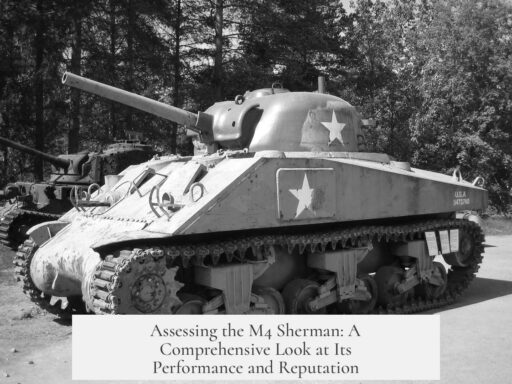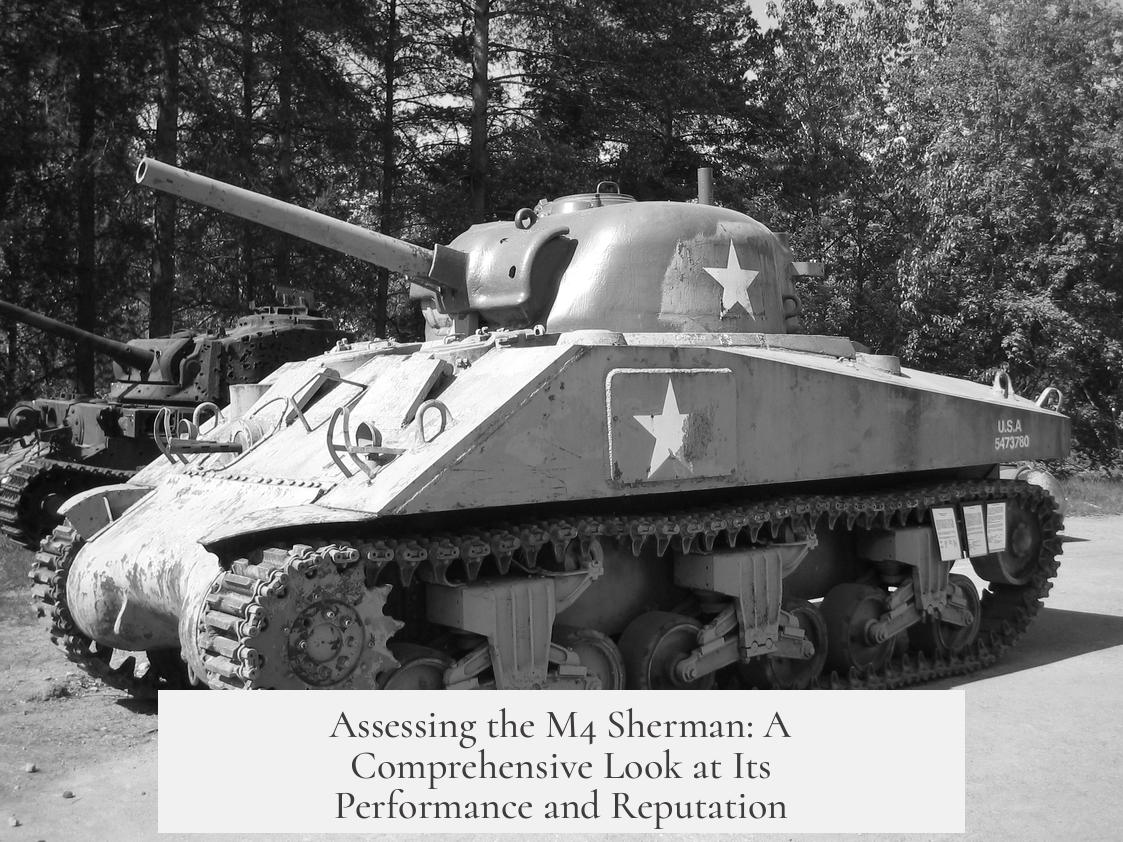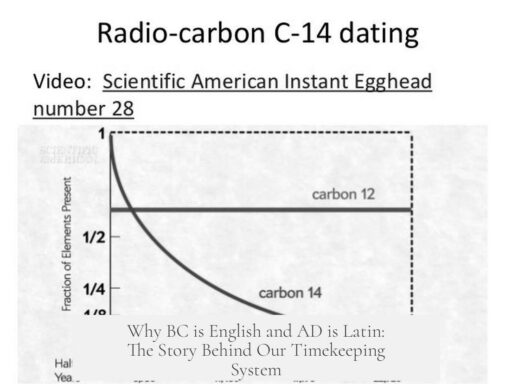The M4 Sherman was a good tank for its intended role, despite some criticisms regarding its vulnerability and flammability. It balanced armor, firepower, and mobility effectively, performed well in combat against German tanks, and underwent significant improvements to reduce fire risks. Its overall effectiveness surpassed many assumptions about its weaknesses.
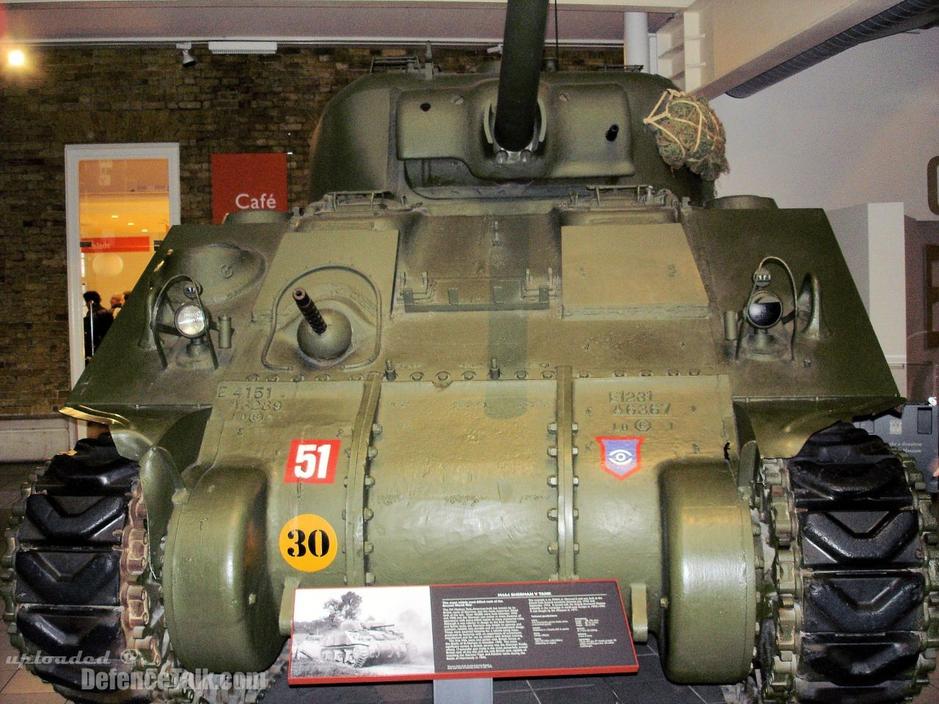
The Sherman tank’s reputation for catching fire when knocked out often misguides assessments of its performance. While studies show that a significant percentage of Shermans did burn (ranging from about 56% to 80% in early models), similar vulnerabilities affected German tanks like the Panther, Panzer IV, and Tiger. These tanks stored ammunition in locations exposed to hits, commonly leading to fires when struck from the side.
- Early “small-hatch” Shermans stored ammunition in turret ready-racks and sponsons above the tracks, vulnerable spots in combat.
- German tanks such as the Panther and Panzer IV had comparable ammunition storage designs, making them equally or more prone to catching fire.
- Panzer IV, for example, burned over 80% of the time when knocked out, higher than earlier Shermans.
The U.S. military recognized the fire risk and introduced key modifications to reduce it. From late 1943, “large-hatch” Sherman variants moved ammunition to armored containers on the floor of the hull. These incorporated so-called “wet storage,” where ammo boxes were surrounded by a water jacket to suppress fires if hit.
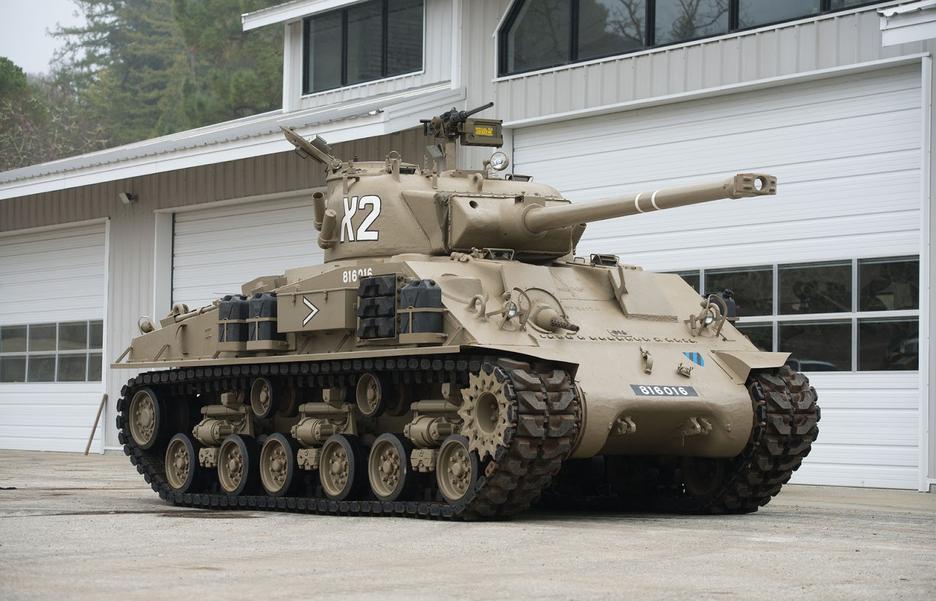
Wet storage dramatically lowered fire incidences to 10-15%, making Shermans safer than most battlefield tanks. This stands as one of the tank’s major advances during the war, improving crew survivability and combat effectiveness. Additionally, criticisms about the Sherman’s gasoline engine contributing to fires misrepresent the facts. German tanks also used gasoline engines and caught fire at similar rates, indicating engine type was not a uniquely hazardous factor.
In terms of combat capability, the M4 Sherman was explicitly designed to engage and defeat enemy tanks. Official U.S. Army manuals stated that medium tanks like the Sherman should confront and destroy other armored vehicles. Data from over 80 tank engagements involving American armored divisions show Shermans defeating German tanks frequently, including Panthers.
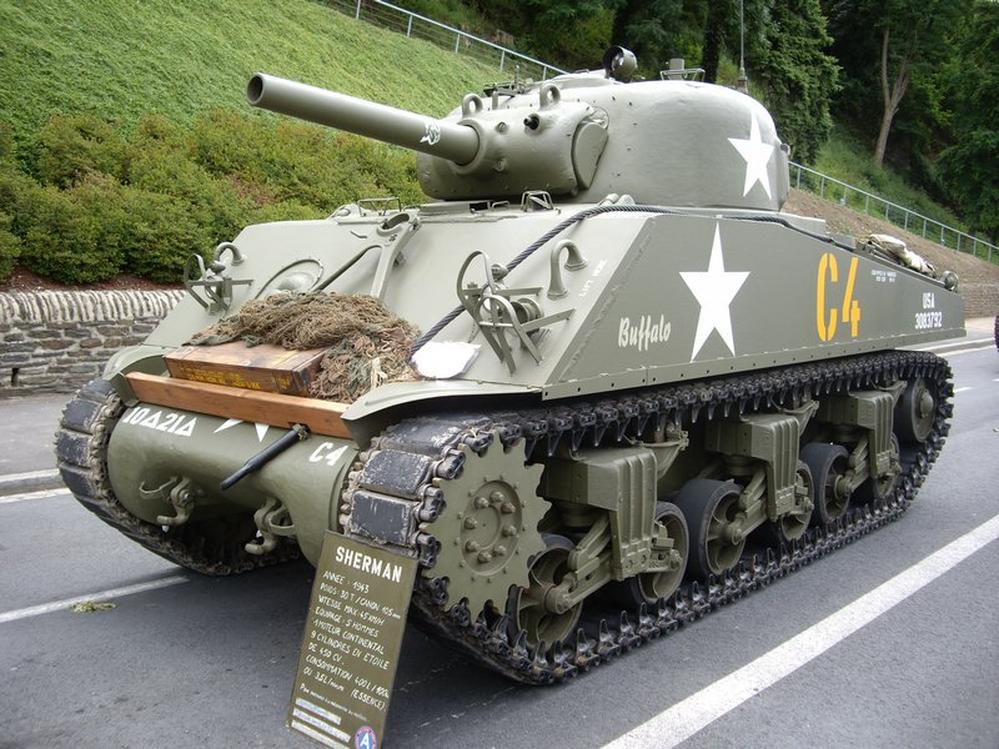
| Engagement Data | Armored Divisions Involved | Enemy Tanks Destroyed | U.S. Tanks Lost |
|---|---|---|---|
| 27 engagements | 3rd and 4th Armored Divisions | 70 Panthers destroyed | 10 Shermans lost |
The Sherman had effective armor and armament for its time. Its 75mm gun could defeat any German tank in 1942, and its hull armor, approximately 90mm effective on the front, resisted German fire over long distances. While later German tanks like the Panther outclassed the Sherman in raw firepower and armor, this did not preclude Shermans from achieving battlefield victories by tactical means and numbers.
Some criticisms claim that it took numerous Shermans to destroy a single German tank. This claim lacks factual support. Actual combat records show the U.S. forces inflicted heavier tank losses on the Germans. The Sherman’s performance was comparable with other medium tanks such as the Soviet T-34, which also had similar armament, armor, and battlefield roles.
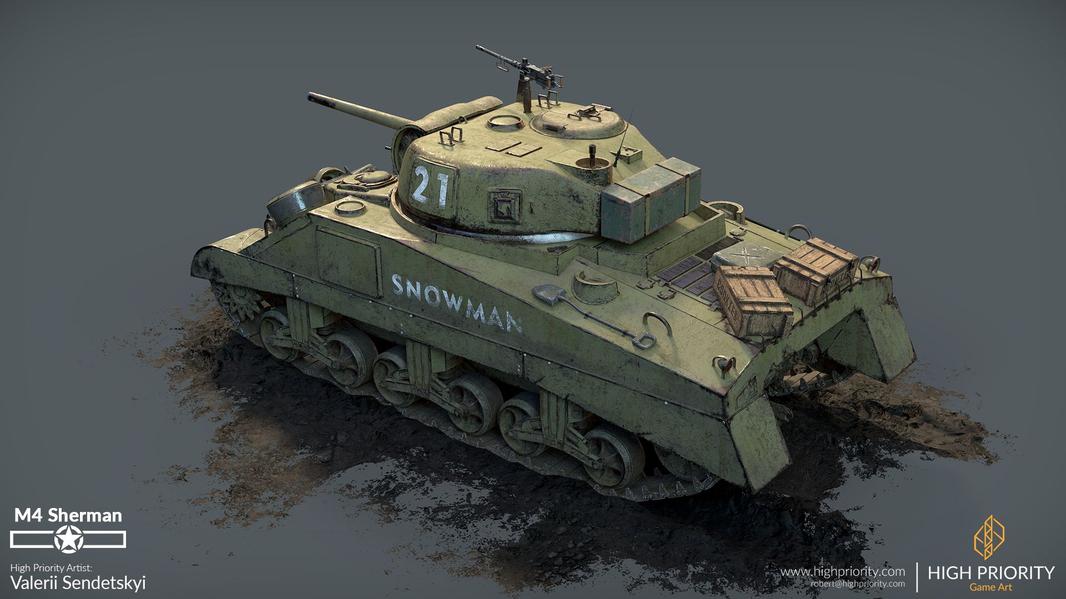
Both tanks had vulnerabilities and strengths. For instance, the T-34 suffered from higher fire rates due to engine overheating and ammunition storage methods. German heavy tanks like the Tiger and Panther also had reputations for catching fire even without combat damage, illustrating that no tank was without design flaws or risk factors.
Lastly, some misconceptions—such as the Sherman’s nickname “Ronson,” implying it lit up like a match—are historically inaccurate or became popularized post-war. The nickname likely originated from flamethrower variants rather than the tank’s general flammability.
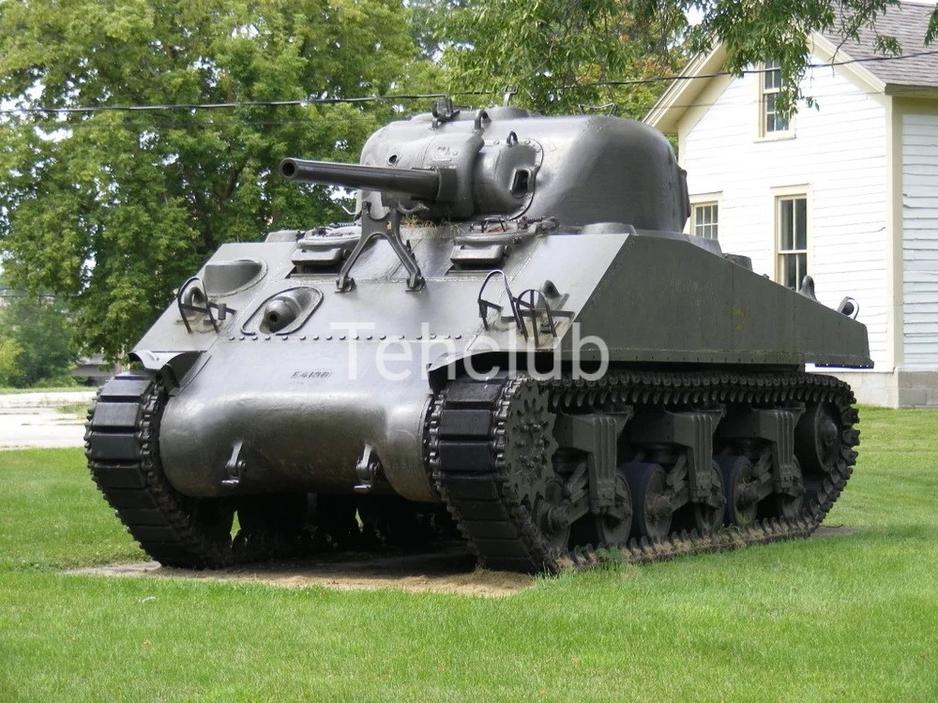
- The M4 Sherman combined adequate firepower, armor, and mobility for a medium tank role.
- Initial ammunition storage led to higher fire risks, but improvements like wet storage greatly enhanced survivability.
- Its gasoline engine was not uniquely responsible for its vulnerability to fires, as German tanks experienced similar risks.
- Combat records show the Sherman effectively engaged and destroyed German tanks, including Panthers and Panzer IVs.
- The Sherman’s overall performance was on par with contemporaries like the T-34, serving well in their respective armies.
- Criticism about the Sherman being “bad” often relies on selective or anecdotal evidence rather than comprehensive studies.
Was the M4 Sherman a Good or Bad Tank?
The M4 Sherman was a good tank, not the perfect war machine of legend, but certainly a smart balance of design, firepower, and combat effectiveness that served the Allies well throughout World War II. Let’s peel this armor plate of myths and facts to see why the Sherman earned its spot in military history.
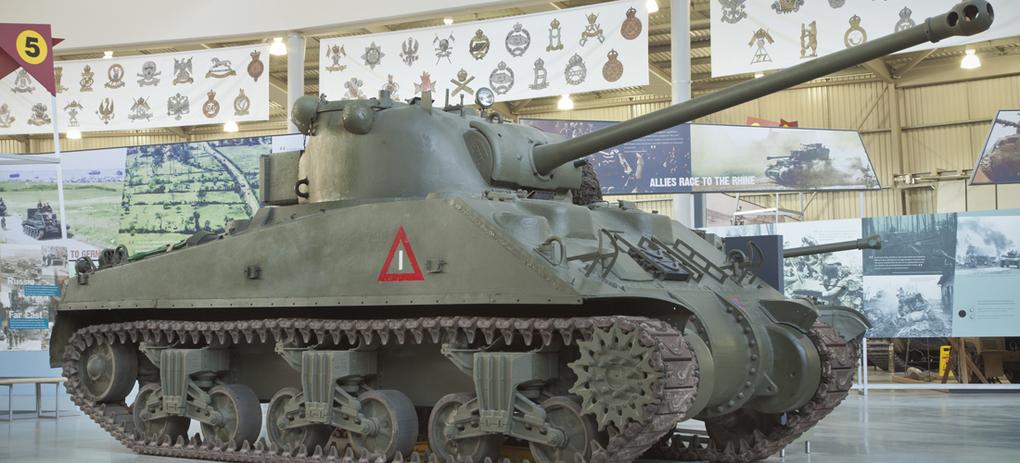
First things first: the infamous idea that the Sherman “caught fire like a torch” stands out as a narrow view. Its reputation for flammability partially stems from how ammunition was stored—and from anecdotes that often leave out critical context. The Sherman wasn’t alone in this, and actually took meaningful steps to fix the problem over time.
The Flammability Factor: Was the Sherman Really a Fireball on Tracks?
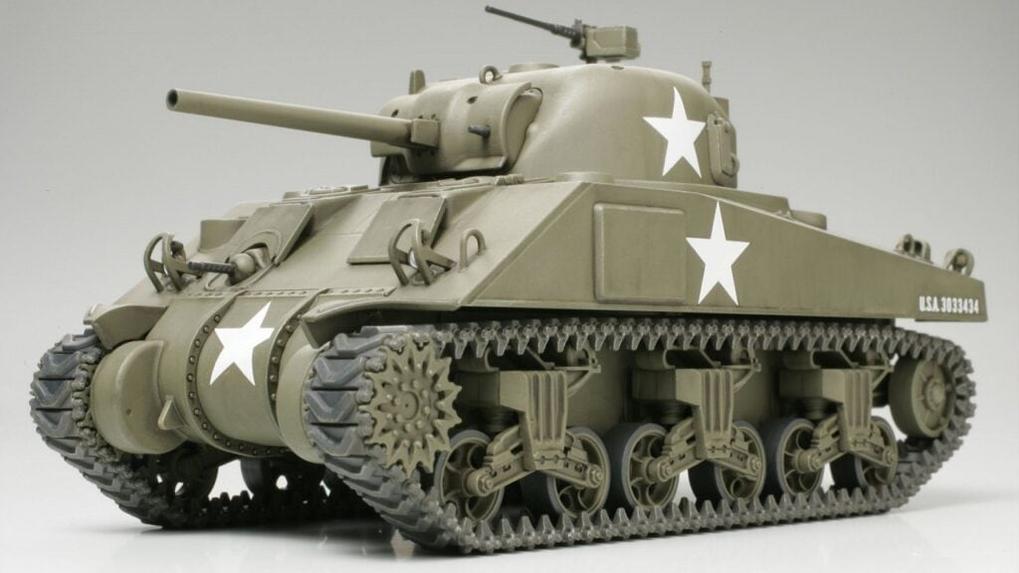
Everyone loves a juicy story about tanks bursting into flames, but the truth is both more complex and less dramatic. Studies reveal that 65% of Shermans burned when knocked out in one American study done in France. That sounds high, right? But wait — a study of British 8th and 24th Armor Brigades showed a similar figure of 56%, while others listed around 80%. So, the Sherman wasn’t out of line with other tanks.
The main villain here is ammunition storage. Early Shermans (those “small-hatch” models) packed ammo into the turret ready-rack or sponsons above the tracks, prime real estate for a side hit to ignite shells. Sound familiar? The Panther, Panzer IV, and Tiger tanks used similar ammo placements. The Panzer IV tragically showed over 80% burn rates, often beating the Sherman on that “risk” front.
Now, the Sherman’s story doesn’t end in gloom. Americans recognized this flaw and engineered smart solutions swiftly. By late 1943, “large-hatch” Shermans rolled out with ammo moved to the tank floor, locked in armored boxes surrounded by water chilling the potential blaze. This “Wet Storage” system slashed burn rates drastically, down to 10-15%. It made the Sherman one of the SAFEST tanks on World War II battlefields in terms of fire risk.
Gas Engines, Flames, and Misplaced Blame
Ever heard someone blame the Sherman’s gas engine for tank fires? Here’s a neat little counter-question: German tanks also packed gasoline engines. Why don’t their tanks bear the same fiery stigma? Well, actually, German tanks caught fire as often. The gas engine itself isn’t a magic flame starter — blame the ammo location and protection strategy instead.
Combat Effectiveness: Did the Sherman Stand its Ground?
Some argue the Sherman wasn’t meant to fight other tanks. That’s a myth. Manuals from the era, like FM 17-10, clearly state medium and light tanks should engage enemy armor. And Sherman did just that.
Studies of the 3rd and 4th Armored Divisions verify the Sherman’s success. In 87 tank encounters featuring 155 Shermans vs 114 Panthers, the U.S. lost only 10 Shermans while knocking out 70 Panthers. That’s a smashing success record, not a wounded retreat!
Sure, the Panther outclassed the Sherman on paper. But it also had reliability problems that held it back. Even Panzer IV upgrades couldn’t match the Sherman’s ability to shrug off enemy fire at mid to long range. The Sherman’s 75mm gun was a serious contender in 1942, able to tackle German tanks reliably.
One silly myth is that it “took X Shermans to kill one German tank.” No data backs up this claim. In fact, the Germans lost *more* tanks to Shermans than vice versa. If you ask, who was truly “better”? The numbers speak clearly.
Sherman vs. Other Medium Tanks: How Did It Stack Up?
Compare the Sherman with the Soviet T-34, and you see striking similarities. Both tanks featured comparable armament and armor, serving similar tactical roles. Neither was perfect—both had flaws—but both effectively carried out their missions.
The T-34’s engine was frankly a headache, prone to overheating, and its ammo handling wasn’t flawless, contributing to high fire rates. Funny enough, Tigers and Panthers—often hailed as fearsome—caught fire even when *not* shot, due to mechanical failures.
With wet ammunition storage, the Sherman became safer than these rivals against the enemy’s shots setting it ablaze. It’s a winning edge overlooked in many casual discussions about “which tank was best.” Safety counts on the battlefield, where a burning tank equals a lost crew and mission.
The “Ronson” Nickname: Fact vs. Fiction
You’ve heard the Sherman called “Ronson,” like the lighter brand’s slogan, “Lights first time, every time.” This nickname has a surprisingly shaky timeline. The slogan itself didn’t exist until the 1950s, after the war.
That said, Ronson *did* make flamethrowers fitted to Shermans. It’s plausible the nickname stuck around because of that association rather than the tank’s flamability. Just goes to show, wartime legends often mix fact and funny coincidence.
Final Thoughts: How Should We Judge the Sherman?
So, what’s the verdict? The M4 Sherman wasn’t flawless. It had room to improve, and it did improve those early ammo storage issues with impressive speed.
It’s tempting to define a tank by how often it went up in flames—but that’s a narrow lens. Real indicators include combat success, design adaptability, crew survivability, and production efficiency. The Sherman excels in most of these categories.
Its production numbers alone are staggering—over 49,000 Shermans made, showing the American knack for manufacturing quality, versatile machines in huge quantities.
Would you want to ride in a metal box that burns like a candle? Probably not. But with “wet storage,” you’d feel quite a bit safer than the myth suggests.
Remember, the Sherman held its own against formidable foes, outnumbered and outgunned at times, but rarely outmatched. Its legacy—battle-proven effectiveness, sound engineering fixes, and sheer versatility—earns it a solid thumbs-up.
The question then becomes: Are you ready to reconsider the Sherman’s reputation? It was more hero than hazard, more backbone than blunder.
Sources Consulted
- John Buckley, British Armour in the Normandy Campaign
- R.P. Hunnicutt, Sherman: A History of the American Medium Tank
- Steven Zaloga, Armored Thunderbolt: The U.S. Army Sherman in World War II
- David Hardison, Data on Tank Engagements involving the 3rd and 4th Armored Divisions
Did the M4 Sherman burn more often than other WWII tanks?
The Sherman burned when knocked out, but not more than many other tanks. Early Shermans burned 55–80% of the time, similar to the Panzer IV and Panther. Later versions with wet storage reduced fires to 10–15%, making it safer than most.
Was the Sherman’s design suitable for fighting German tanks?
Yes. The Sherman was built to fight enemy tanks. Its 75mm gun and armor were effective against most German tanks until mid-1944. Studies show US Sherman crews destroyed more Panthers and German tanks than they lost in battle.
How did ammunition storage affect the Sherman’s fire risk?
Early Shermans stored ammo in vulnerable locations that caught fire easily when hit. The US later moved ammo to the floor in armored containers with a wet storage system, greatly reducing fire risk and improving crew safety.
How did the Sherman compare to other medium tanks like the T-34?
The Sherman and T-34 had similar armor and firepower. Both served their roles well. The T-34 actually caught fire more often due to engine issues and ammo storage, while the Sherman improved with wet stowage to minimize fires.
Did the Sherman’s gas engine increase its chance of catching fire?
All German tanks also used gasoline engines and caught fire at similar rates. Engine type was not unique to the Sherman when it came to fires. Ammunition placement was a bigger factor in fire risk.
